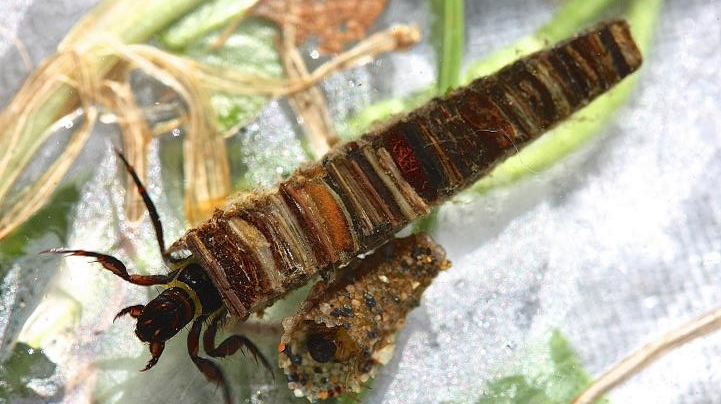Order: Trichoptera

Beavers may be the best-known builders of the animal world, but they’re not the only ones. Beneath the water’s surface, young caddisflies build themselves homes with exquisite craftsmanship as they wait to emerge on land as adults.
Habitat
Look for young caddisflies, known as larvae, below the surface in freshwater places such as wetlands, streams, rivers, and lakes. Adults can be found flying above the surface in these same places.
You can find caddisflies at Oak Hammock Marsh!
Food
Depending on the species of caddisfly, the underwater larvae will eat different things. Some are predators, while others eat plants or algae. Yet others will scavenge on dead fish, while some feed on rotted wood or plant matter. Some adult species will eat nectar, but most don’t feed at all.
Behaviour
Eggs are laid at or near the water’s surface by adults. After hatching, the larvae, looking like a caterpillar, construct a tube-like case using silk they produce, most often attaching materials from the bottom of the water. These may include plants, pebbles, sticks, or even tiny snail shells. Depending on the species, larvae may carry the tube with them as they move, or they may anchor the tube and wait for food to come by. Eventually, a pupal cocoon, similar to the tubes, is built and attached to a plant. When they are near the final stage, they cut through the case and swim up to the surface, shed their skin, and adults fly away.
Conservation
Caddisflies are good bioindicators of water quality. Their presence, or absence, can indicate healthy, or unhealthy, water habitats. Along with other insects, caddisflies are important food for fish. In fly fishing, the small hooks used try to replicate caddisfly larvae and adults to catch trout and other species. This builds understanding of caddisflies and helps lead to their conservation.

